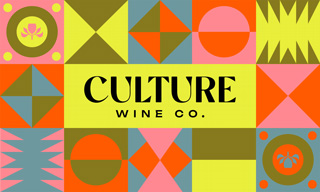Franschhoek
Along with regions like Barolo (Italy), Douro Valley (Portugal), and Mosel Valley (Germany), Franschhoek is one of the most beautiful wine regions in the world. Its wines are among the best in South Africa and its hospitality is as warm as it comes.
A small amphitheater-shaped valley, Franschhoek is nestled in a bowl at the base of mountain peaks on three sides. The contrast between a verdant landscape, granite peaks, and native fynbos is almost too much beauty to absorb in one visit.
It’s also a tourist’s haven, with a deep offering of stellar accommodations and restaurants you’d expect in the places like Napa Valley or Sonoma, attracting visitors from all over the world. You’ll never feel overcrowded, but always welcomed with warm, unpretentious South African hospitality.
Winemaking in Franschhoek (‘French Corner’ in Dutch) dates back to 1688, when it was first settled by French Huguenots fleeing religious persecution. It was first dubbed, Olifantshoek, or ‘Elephant’s Corner’ due to a large elephant population that once roamed the land. Sadly, there are no more elephants in the region (there still are plentiful, very pesky baboons), but the French influence remains – as evidenced by the names of the top wineries and in the town’s architecture.
Franschhoek benefits from many different geographical features. The Wemmershoek Mountains to the north act as a boundary from the hot and dry Breede River Valley, while the Groot Drakenstein and Franschhoek Mountains to the south shield it from heavy oceanic influence. These mountains also cast shadows at different parts of the day, which help moderate a hot continental climate by reducing direct sunlight on the vines. This effect is important for slowing down ripening and is particularly significant on the south-facing slopes, where elevated trellising systems capture passing sunlight. Moreover, the encircling mountains help trap cool southerly winds, extending the growing season and enhancing the complexity of aromas in the grapes.
The Berg River flows from the peak of Drakenstein Mountains and meanders through the center of Franschhoek, west towards Paarl. This river, combined with the surrounding mountains, creates perfect topography for viticulture, allowing vignerons to optimize sun exposure by controlling the vineyard aspect (direction of planting – a critically important element when planting a vineyard).
The predominant soils in Franschhoek consist of alluvial sandstone, with deposits of granite present on the northern slopes. While the heavier soils closer to the river retain some moisture, the sandy soils on the lower slopes have excellent drainage. Consequently, and despite adequate winter rainfall in the area, some irrigation is necessary to supplement water availability for the vineyards.
These incredible features add up to robust, full-bodied reds and aromatic, fleshy white wines that all show a distinct stony mineral component from mid-palate through the finish.
If we were to present a challenge facing Franschhoek today, it would not by around producing quality. It would be to create a stronger focus and pinpoint viticultural strengths that characterize Franschhoek as a whole, establishing typicity in its wines. In simpler terms, the challenge has never been about achieving quality here – you’d really have to screw up for that. The main challenge of the region is to isolate the best varietals to develop a true regional identity and focus on those. While the market demands a wide range of wines, the region with benefit from a future where specific grape varieties receive attention and identification, paving the way for a more defined viticultural direction.
It’s a great problem to have and we’re sure that time will only see this region grow in quality and popularity worldwide.


